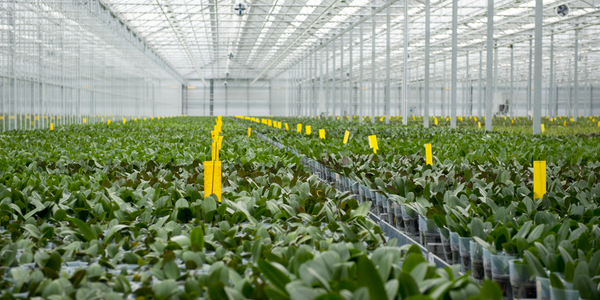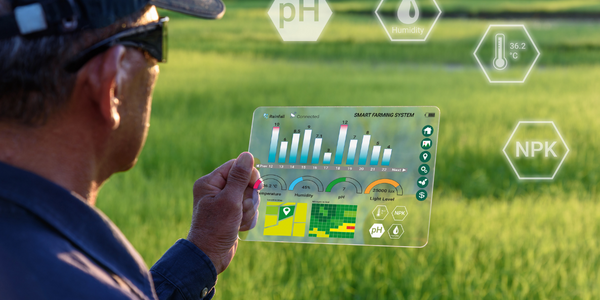Customer Company Size
Large Corporate
Region
- America
Country
- United States
Product
- IBM Business Process Manager
- IBM Case Analyzer
- IBM Case Manager
- IBM Classification Module
- IBM Content Collector for Emails
Tech Stack
- IBM Content Navigator
- IBM Datacap
- IBM eDiscovery Manager
- IBM Enterprise Records
- IBM FileNet Content Platform Engine
Implementation Scale
- Enterprise-wide Deployment
Impact Metrics
- Cost Savings
- Productivity Improvements
Technology Category
- Analytics & Modeling - Big Data Analytics
- Application Infrastructure & Middleware - Data Exchange & Integration
Applicable Industries
- Agriculture
Applicable Functions
- Facility Management
- Logistics & Transportation
Use Cases
- Building Automation & Control
- Building Energy Management
- Construction Site Monitoring
Services
- Data Science Services
- System Integration
About The Customer
Established in 1843, Tejon Ranch Company (NYSE:TRC) is a fully diversified integrated real estate company and agribusiness, whose principal asset is California’s historic Tejon Ranch. The 270,000-acre ranch is the largest single piece of private property in the state. In addition to agriculture, the company also manages the property’s significant oil, gas and mineral resources, and is developing a number of major commercial, industrial, retail and residential real estate projects.
The Challenge
Tejon Ranch, with its 270,000 acres of California real estate, operates on a grand scale. The size of the property unlocks opportunities that smaller companies can only dream about – and at the same time, the scope of the challenge created by those opportunities can also be vast. The company knew that its ability to build the communities of the future would depend on its ability to harness technology – and in particular, its ability to gather, analyze and understand data. It also realized that analytics could not only help it to design and build its new developments, but could also help it to transform its traditional business lines, such as its hunting and farming operations.
The Solution
For the past three years, Tejon Ranch has been working in partnership with IBM to build a single platform for content management, collaboration and analytics across all of its lines of business. This effort has recently reached a major milestone with the development of a new user interface known as the EVO UI, which gives employees instant access to data, documents and collaboration tools via a unified mobile interface on their PC, smartphone or tablet device. The heart of the platform is enterprise content management, which unites all of the organization’s documents and correspondence into a central repository, overlaid with seamless, automated workflows that make it easy to support sophisticated business processes. Tejon Ranch has also integrated geographic information systems (GIS) with its content management solution, enabling documents and data to be mapped to relevant locations across the ranch.
Operational Impact
Quantitative Benefit

Case Study missing?
Start adding your own!
Register with your work email and create a new case study profile for your business.
Related Case Studies.

Case Study
Intelligent Farming with ThingWorx Analytics
Z Farms was facing three challenges: costly irrigation systems with water as a limited resource, narrow optimal ranges of soil moisture for growth with difficult maintenance and farm operators could not simply turn on irrigation systems like a faucet.

Case Study
Greenhouse Intelligent Monitoring and Control Solution
Farming Orchids is the most successful form of precision farming in Taiwan, and also the most exported flower. Orchids need a specific temperature and humidity conditions to grow and bloom, and its flowering time may not be in line with market demands, so the price collapses when there is overproduction. Therefore, some farmers began to import automated greenhouse control systems for breeding and forcing, which not only improves quality, but also effectively controls the production period and yield to ensure revenue. In 2012, an orchid farmer built a Forcing Greenhouse of about 200 pings (approximately 661 Square Meters) in Tainan, Taiwan. The system integrator adopted Advantech’s APAX-5000 series programmable automation controllers to build the control platform, coupled with Advantech WebAccess HMI/SCADA software, to achieve cloud monitoring. The staff of the orchid field can monitor important data anytime via smart phone, iPad, and other handheld devices, and control the growth and flowering conditions. System requirements: In the past, most environmental control systems of orchid greenhouses in Taiwan used PLCs (Programmable Logic Controller) with poorscalability and control, and could not be connected to the Internet formonitoring from the cloud. For advanced database analysis and networking capability, the PC platform must be adopted. Therefore, PAC Systems (Programmable Automation Controller) with both PLC programming capabilities andPC functions is a better choice.The environmental control of the Orchid greenhouse switches on and off devices like fan, shade net, cooling/heat pump, liquid flow control, water-cooling wall etc. It is controlled by a control panel of electric controllers, and is driven by a motor, to adjust the greenhouse temperature, humidity, and other environmental conditions to the set parameters.

Case Study
Enabling Internet of Things Innovation in Agriculture
DigiBale, wanted to apply technology know-how and IP from implementations successfully to more agriculture sectors including cotton, forestry, sugarcane and cattle. However, farmers and growers still have worries about the connected technology.

Case Study
Precision beekeeping with wireless temperature monitoring
Honeybees are insects of large economic value and provide a vital service to agriculture by pollinating a variety of crops. In addition, bees provide us with valuable products such as honey, beeswax, propolis, bee venom, etc. Monitoring of honeybee colony health, population, productivity, and environmental conditions affecting the colony health have always been exceedingly difficult tasks in apiculture. Research has shown that even small deviations (by more than 2°C) from the optimal temperatures have a significant influence on the development of the brood and the health of adult bees.





